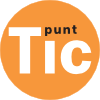L’Observatori de la Igualtat de Gènere de l’Institut Català de les Dones, which is part of the Departament d’Igualtat i Feminismes de la Generalitat de Catalunya, has recently presented the statistical dossier 'Women in ICT', which has data updated on the presence of women in the sector of new information and communication technologies. The report has had the collaboration of the Secretaria de Polítiques Digitals del Departament d’Empresa i Treball de la Generalitat de Catalunya, through the Direcció General de Societat Digital, which has provided data from the Baròmetre de la DonaTIC a Catalunya del Pla DonaTIC.
The statistical file 'Women in ICT' shows that the employment of women in technological environments has grown by 5.9% in the last five years, between 2017 and 2022, and, consequently, s 'approaches 34%, going from 28% to 33.9%. The report shows an increase in the participation of women in technological environments, although this presence is still uneven and exemplifies a gender bias. In terms of technical profiles, the data show that there is a higher percentage of women in the field of project management (32.7%) than in the field of software production (25.8%) or 'area of infrastructure development (18.7%). In the same way, men make up 90.1% of students enrolled in ICT-related professional training courses, while women make up 9.9%. Likewise, at university, only 7.3% of university degrees obtained by women were in engineering or architecture while men obtained 27% of university degrees. Also, although the common use of the Internet is very similar, the purposes differ. Women check out more wellness-related activities and men read more articles.
At the same time, the statistical dossier 'Women in ICT' incorporates a special section with institutional initiatives that work to alleviate this gender bias, such as, for example, the DonaTIC Awards.



